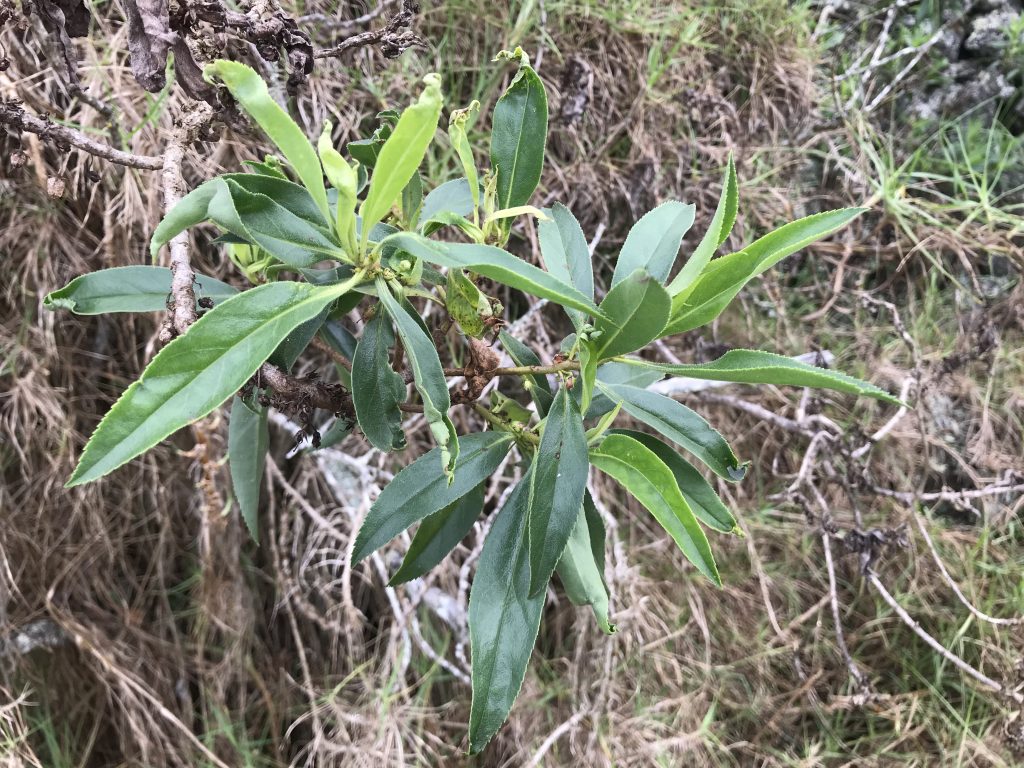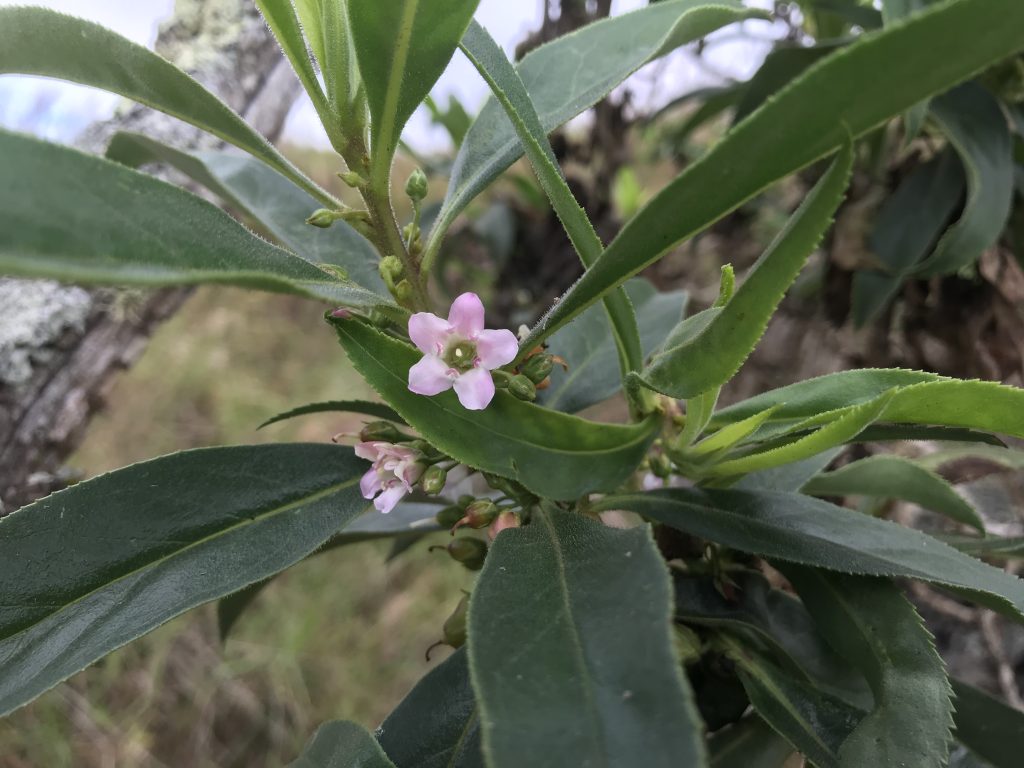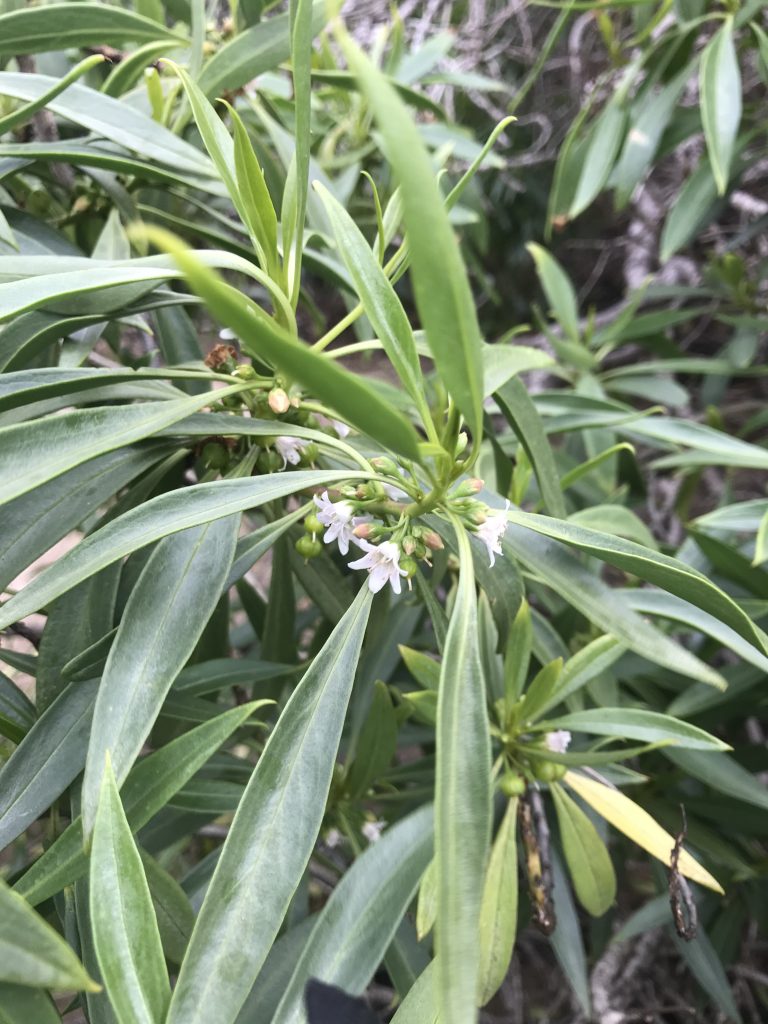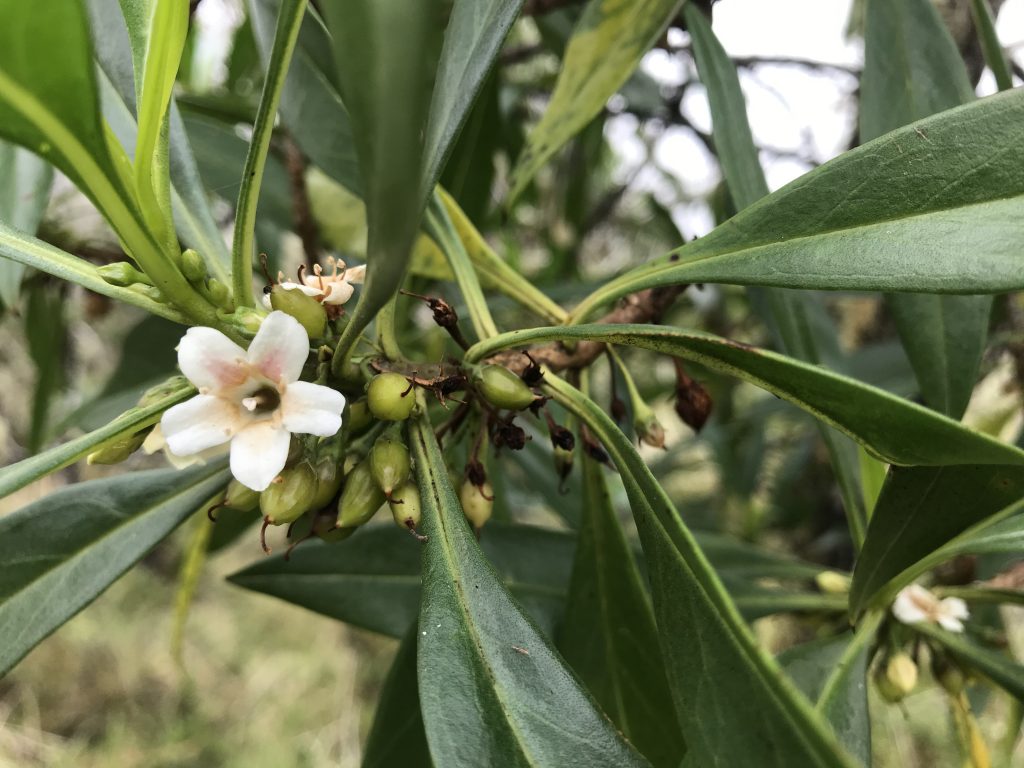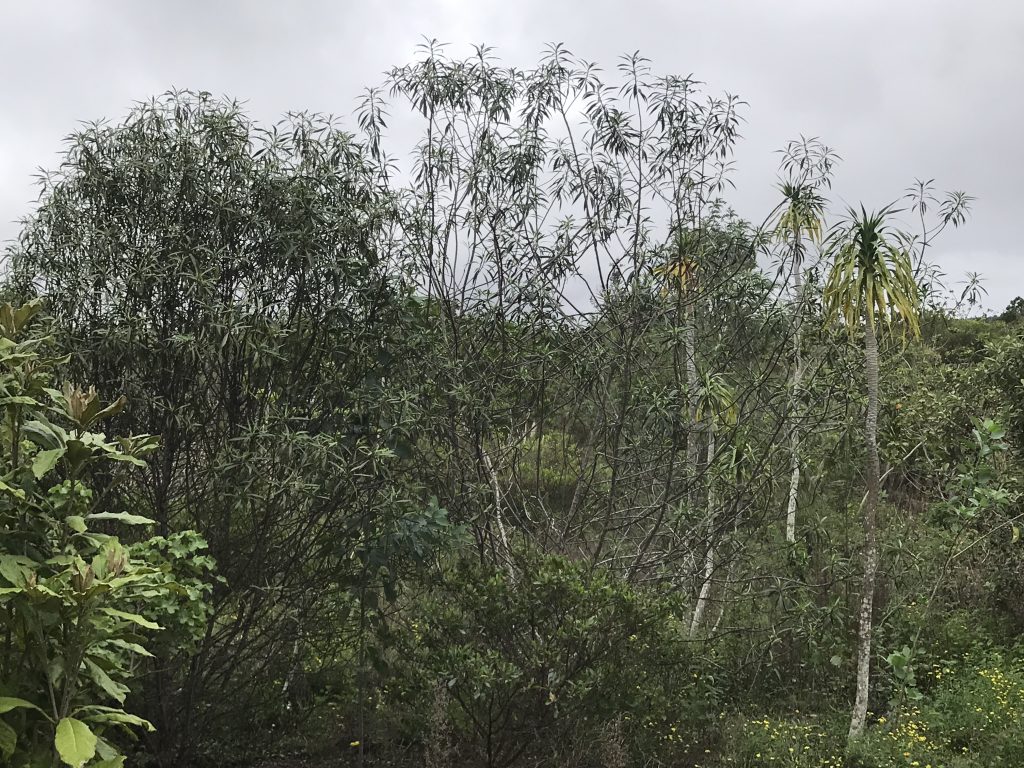Naio
Names
- ʻŌlelo Hawaiʻi: Naio
- Scientific: Myoporum sandwicense var sandwicense
Conservation Status
- NatureServe Heritage Rank G3 – Vulnerable
Species Information
Naio is indigenous to Hawai’i and part of the Myoporaceae family. It can grow into a many-branched shrub to a small tree. At elevations above 762 m (2500 ft), it can get to 12.7 m (45 ft) tall, but generally it is much smaller. It generally grows to about 4.5 to 7.6 m (15 to 25 ft). Naio has dark gray, grooved bark. Its fruits, when ripe, range in color from greenish white to pinkish or purplish (“Myoporum Sandwicense,” n.d.).
Distribution
Naio is found on all the main Hawaiian islands except Kaho’olawe.
Habitat
Naio occurs in a variety of habitats including shoreline vegetation, a’a lava, and dry, moist, and wet forests. Naio is most common in subalpine forests and grows at elevations ranging from sea level to 2347 m (7,700 feet) (“Myoporum Sandwicense,” n.d.).
Threats
- Naio thrips are insects which attacks the naio. Thrips are small sap-sucking insects with feathery wings. They can cause scarring of leaf, flower, and fruit surfaces leading to lethal plant damage. The leaf curling and gall formation effects of thrips on naio plants will be noticed before any insects are seen. These thrips are tiny and are shiny dark brown with a noticeable posterior tube. Immature thrips are similar in shape but are yellow to orange in color.
- Competition with alien invasive plants
- Wildfire
Plans & Projects
Palila Forest Discovery Trail: Naio
References & Additional Resources
“Myoporum Sandwicense.” Hawaiian Native Plant Propagation Database, College of Tropical Agriculture and Human Resources: University of Hawaii at Manoa, https://www.ctahr.hawaii.edu/hawnprop/plants/myo-sand.htm.


